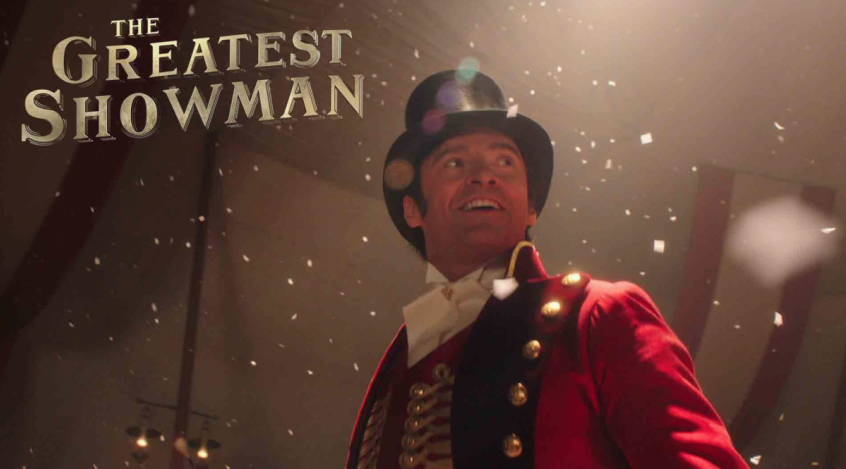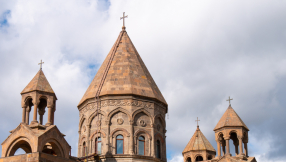Though I've not yet seen it, I'm reliably informed by my family that The Greatest Showman is a rather amazing spectacle of joyous entertainment. In my 12-year-old son's words, it's 'even better than La La Land', which is somewhere between high praise and blasphemy to me, but I'll reserve judgement until I've seen it. Detailing – in somewhat airbrushed terms – the life of PT Barnum, inventor of the circus and possibly even modern show-business, it's drawing millions of cinema-goers into a second and even third visit, much like the peerless entertainer of the film's title once did.
Well, far be it from me to draw tenuous parallels between the subject of modern movies and the Son of God...but was Barnum really the greatest showman? I wonder if those who witnessed the ministry of Jesus might beg to differ.

If you were one of the disciples, or just part of Jesus' travelling fan base, you'd have seen quite an extraordinary range of staggering feats performed. Substances changed from one to another, confounding science (John 2: 1-11); nature being controlled at a word (Mark 4: 35-41); a man walking on the surface of water (Matthew 14: 22-33); a dead man being brought back to life (John 11: 40-44). It's a little facetious to reduce these events to an extraordinary show, but there's certainly never been anything like it in history.
One of the most fascinating aspects of Jesus' miraculous ministry is the diversity within it. Jesus was a miracle healer and, if you'll forgive the slightly tongue-in-cheek use of the phrase, magician. Or maybe, since his 'magic' was real, we might describe him as a sort of wizard*. The thing about magicians is that in order to become great at their art, they practise and perfect routines. They put literally hundreds of hours of sweat and toil into repeating the same trick over and over again, until those who witness it actually believe they're able to do the impossible. Then, once the trick is perfected, it becomes part of their act: to be rolled out again and again, night after night, in Vegas if they're extremely good, and Blackpool if not. Jesus however, almost never repeated a 'trick'. As he tours around, even though the crowds are different, he puts on a different show every night.
Take his healing of the blind, for example. There are three stories which detail this, and each of them finds Jesus giving or restoring sight in a completely different way. At Jericho in Mark 10: 46-52, Jesus heals Bartimaeus with a word (or as Matthew has it, a touch to the eyes) after which his sight immediately returns, and he is told that his faith has healed him. At Bethsaida in Mark 8, Jesus heals a man by putting spittle on his eyes, and also heals him in stages – first of all he sees people who 'look like trees to me', and then, when Jesus again touches him, he sees clearly and distinctly (Mark 8:22). Then at Siloam, when Jesus heals a man who was born blind, he makes a paste out of the mud from the ground, places it on the man's eyes and tells him to wash it off in a pool (this is arguably Jesus' grossest miracle), at which point he sees for the first time. Jesus does the same thing three times, but each time it's completely different.
So why? Why doesn't Jesus just have a routine that he goes through, as he travels around the countryside? Why all the variation; why all the risky new tricks? I think there are a few reasons:
1. Because he's endlessly creative
We somewhat take the creativity of God for granted. Despite the fact that he's responsible for the Northern Lights, the sun moon and stars AND all those great bits of scenery in the Lord of the Rings movies, we somehow overlook his boundless ability to create extraordinary new works of art and beauty. As the Son of God, Jesus echoes the Father's creative spirit and power. It's only natural then, that Jesus' ministry would look constantly innovative, as he chose exactly the right miraculous intervention for each situation he faced. The vast majority of his miracles involved one person, rather than a crowd (even if one was looking on in amazement), and in each occurrence he met the specific need of that person with a tailored, creative response.
2. To demonstrate his power
A magician can learn and – after those many hours of failed attempts – perform a trick. Jesus had a completely new miracle up his sleeve every day. The sheer range of extraordinary powers he showcased during the three years of his ministry were a key way that the people of his time knew that he was not just a great showman, but truly in possession of awesome supernatural power. It's the same for us, reading the story today; we're not hearing about Houdini, pulling off a few extraordinary but ultimately-explainable illusions, but a man who performed a wide variety of impossible feats on a daily basis.
3. Because each healing has its own story to tell
Jesus caters for a range of learning styles. His parables connect with those who learn through engaging with story; his direct commands, blessings and woes are helpful for those of us who think more soberly. His miracles are also instructive though, and each one reveals a little more about the nature of God and his Kingdom. The healing at Bethsaida, for example, is a clue to what some call the 'now and not yet of the Kingdom', by which we mean that not all of God's power has broken through into earth. The calming of the storm speaks into our restlessness and lack of faith and patience; the healing of the Centurion's servant has something powerful to say about how we engage with our 'enemies'. Jesus uses each miracle as an opportunity not only to show who he is, but also to communicate important ideas to those looking on.
4. To inspire us to do likewise
PT Barnum is celebrated not just because he was able to create something extraordinary, but because he inspired literally millions of others to follow his lead. It's not hard to see the parallel here: Jesus said himself that we would "do even greater things than these" (John 14 v 12), and as we track the life of the early church through the book of Acts, we see that he's as good as his word. The story doesn't end there though, the Holy Spirit enters the world at Pentecost and is still with us today; still just as powerful. The variety in Jesus' miracles is inspiring because it helps us to see that there isn't a single sort of 'super-power' which Jesus had and can pass on to us, but rather that we live in a world that is both natural and supernatural, and that the latter can be accessed to subvert the former in all sorts of ways.
Jesus' miraculous ministry was one of the things that drew followers first in his local vicinity, and then eventually right across the world. Not only did word spread of his incredible feats, but people saw them replicated elsewhere by his followers. That same power still exists today: we remain quite good at talking about it, but perhaps as we look again at Jesus' miracles, we should be inspired not just to talk like him, but to act like him too.
*Please understand I'm not actually saying Jesus was a wizard, or that he did tricks or a show. It's just a bit of artistic licence to make a point. There's no need to write letters to the editor about this.
Martin Saunders is a contributing editor for Christian Today and the deputy CEO of Youthscape. Follow him on Twitter @martinsaunders.













